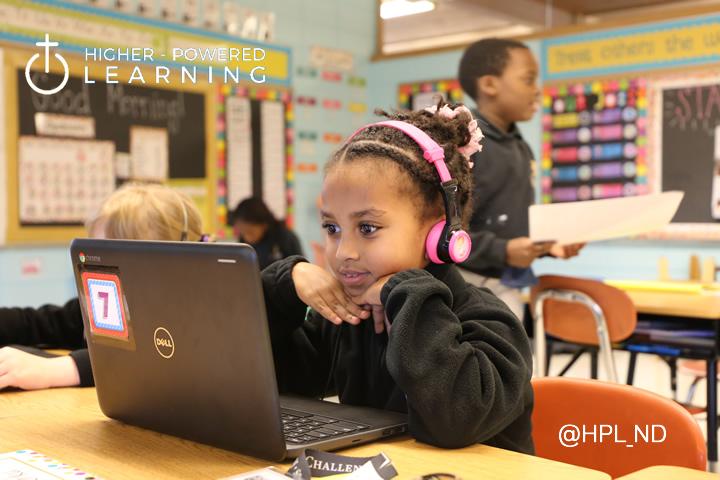A growing body of thought emphasizes the importance of blended learning as a complement to social-emotional learning. The Christensen Institute recently wrote about how blended learning can build relationships between teachers and students. Today, we discuss three ways we've seen blended learning improve the social-emotional landscape in classrooms.
Teaching Social-Emotional Skills in Small Groups
At one of our partner schools, teachers have a morning meeting with students. During this time, teachers check in with small groups of students about their goals for the day and practice restorative conversations. In these conversations, the teacher can help students practice ways to show empathy to their classmates by repairing a relationship after harm has been caused. By having the opportunity to practice restorative conversations with students, teachers are intentional about creating a safe space for the emotional and social needs of their students. Some teachers intentionally group students during this time to focus on coping skills while other teachers use this time to build community between students.
In your blended classroom, creating small groups that focus on social-emotional skills can occur in the morning or in the evening before students go home. For younger students, teachers can play games or role-play social situations in small groups to help students learn how to build their social skills. With older students, teachers can foster guided discussions or place students in small collaborative groups to discuss social issues and develop their emotional coping skills. Websites like Newsela and Readworks give teachers resources and articles to support social-emotional conversations.
Just as we use differentiation and varied instruction when teaching academic subjects, teachers can use blended-learning to vary and differentiate social-emotional learning for students.
Addressing Children in Crisis
Many blended-learning models give students plenty of freedom in the model and execution of their learning. For example, in station-rotation models, students work independently or collaboratively in small groups, while one small group works closely with the teacher. With a robust blended-learning model, teachers can easily give students independent tasks. When I taught elementary school, I occasionally had students who experienced crises. These crises ranged from explosive tantrums to silent withdrawal from an activity. In each of these cases, the student in crisis needed immediate emotional support from an adult. When I needed to give full support to one student, I was able to direct other students to complete a quiet partner task or a silent independent task. With the support of reliable classroom management systems, my students were terrific at supporting their classmate by allowing me to address an individual's needs immediately. Because my students were accustomed to independent and collaborative work, they didn't need my oversight to complete their tasks. Students felt safe in our classroom because they knew their emotional needs would always be addressed with my full attention.
Fostering Collaborative and Intentional Learning Experiences for Students
Finally, blended-learning allows for intentional collaboration between students. At our partner schools, some teachers use mixed-groups for station-rotation models. This enables students who have mastered content to partner with students who need support to achieve mastery. Allowing students the time and the space to support each other's learning allows students to forge relationships and build their capacity for empathy.
Blended learning provides so many benefits to teachers and students. One significant advantage is blended learning's support of social-emotional learning because the model provides teachers and students opportunities to deepen social-emotional practices. Students have a space to collaborate and increase their levels of empathy with this model, and teachers have the space to support students in crisis. Finally, blended learning provides teachers the space to teach small groups of students social-emotional skills intentionally.
If you have another example of how blended learning supports social-emotional learning, please drop a comment below!
 Alliance for Catholic Education
Alliance for Catholic Education
